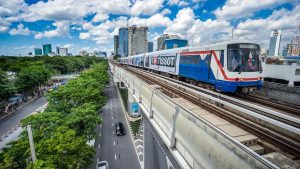 The Asian Development Bank (ADB) has invested USD 38.2 billion in Asia and the Pacific’s transport sector, of which USD 9.6 billion was the total investment in urban and railway transport, according to a report which assesses the performance and results of the bank during 2010–2018.
The Asian Development Bank (ADB) has invested USD 38.2 billion in Asia and the Pacific’s transport sector, of which USD 9.6 billion was the total investment in urban and railway transport, according to a report which assesses the performance and results of the bank during 2010–2018.
Over the last decade, the bank provided 25% of transport funding to the sustainable transport.
USD 5.9 billion (15.4%) was the support for urban transport, while USD 3.7 billion (9.6%) was invested in railway transport. The largest share – of 69% or USD 26.4 billion was bank’s support for nonurban road segment. USD 2.3 billion, of 6% was the support for the other subsectors such as air transport, multimodal logistics, transportation policies and institutional development, and water transport.
The strategic directions issued in 2010 to guide ADB’s interventions in this sector over the last decade provided initial momentum for increased support to urban transport. While this trend was not maintained, there has been an uptick in 2019.
ADB support for railways increased, but urban transport continues to be a high priority for the people of this region. Private vehicle ownership is rapidly outstripping urban road network capacity. Some cities are choking on vehicular carbon emissions and this needs urgent attention. For greater impact in the future, transport sector operational directions need to be discussed at the country level and included in ADB’s country partnership strategies, the report says.
ADB’s priority during the evaluation period was financing transport infrastructure, but there was insufficient attention to delivering sustainable transport services such as accessibility, safety, affordability, and environmental impact.
The report highlights the increasing demand for mobility and freight movements in the Asia and Pacific region, requiring quality infrastructure standards and affordable services that are sustainable, safe, and environment friendly.
According to bank’s estimations, an investment of USD 500 billion per year is needed to meet the increased demand for transport infrastructure in Asia and the Pacific. The investments in transport sector have mainly come from public funds, with only a small share coming from the private sector. “Public funds alone cannot finance such large amounts. As of now, private sector participation has been limited, but eventually, they would have to step up and increase their investments. Removing barriers and constraints and applying innovative approaches is key to attracting private sector investment” said IED Director Nathan Subramaniam.
Share on:



